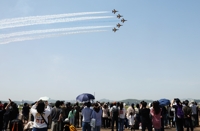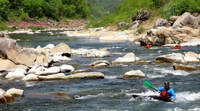As rainy season begins, downpours hit Seoul, other cities
SEOUL, June 23 (Yonhap) -- Heavy rain pounded Seoul and northern parts of the country Thursday, marking the start of the one-month annual rainy season, the state weather agency said.
More than 100 millimeters of rain had fallen in Gyeonggi Province, Incheon and Gangwon Province as of 9:00 p.m., the Korea Meteorological Administration (KMA) said.
Precipitation was heaviest in Yangju and Paju in Gyeonggi Province, and Ganghwa in Incheon, where about 130 mm were recorded. Seoul received 83.1 mm of rain.
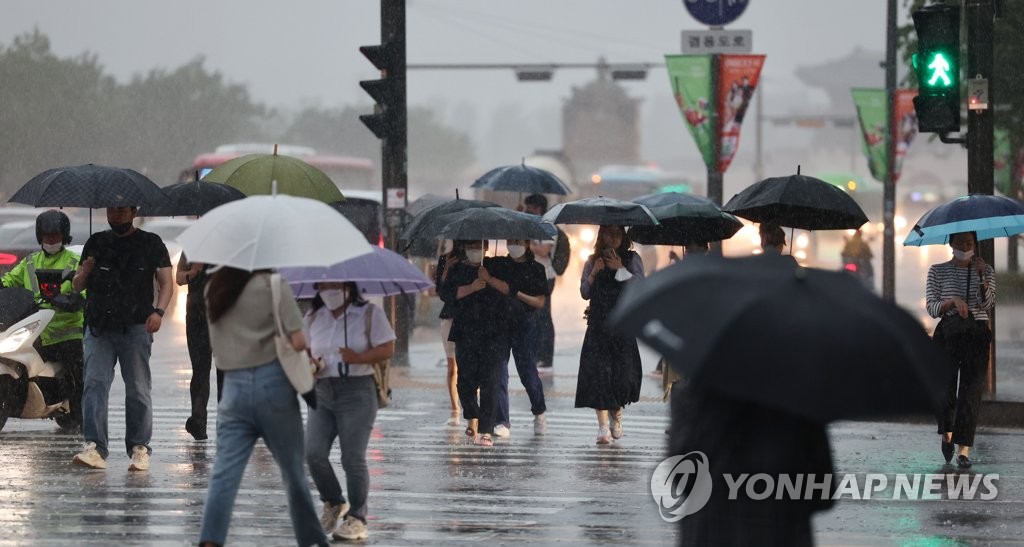
People holding umbrellas cross a street at the Gwanghwamun intersection in the rain in Seoul on June 23, 2022. The annual rainy season began on the day, with most of the country forecast to receive heavy rainfall through the following day. (Yonhap)
Downpours between 30 mm and 50 mm were forecast to continue in Seoul, Gyeonggi and Gangwon through the night, while central and southern parts of the country will receive the same amount of rain through Friday morning, the agency said.
Heavy rain advisories were issued for Seoul, Sejong, Daejeon, Incheon, Gyeonggi Province, North Jeolla Province, South Chungcheong Province, and parts of South Jeolla, North Chungcheong and Gangwon provinces.
Dozens of property damage cases were reported in Incheon, Gyeonggi and Gangwon, including flooded greenhouses, fallen roadside trees and broken building windows.
Earlier in the day, President Yoon Suk-yeol instructed officials to brace thoroughly for the rainy season, including by quickly evacuating residents in case of heavy downpours, his spokesperson said.
The president ordered the interior ministry and other related agencies to carry out advance inspections in areas prone to landslides, low-lying coastal areas and campgrounds.
(END)
-
 BTS' RM to prerelease a track of 2nd solo album
BTS' RM to prerelease a track of 2nd solo album -
 'Queen of Tears' weaves rich tapestry of Korean contemporary art
'Queen of Tears' weaves rich tapestry of Korean contemporary art -
 Indonesia coach left with mixed feelings after eliminating native S. Korea in Olympic football qualifiers
Indonesia coach left with mixed feelings after eliminating native S. Korea in Olympic football qualifiers -
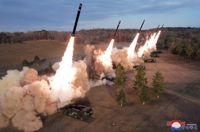 N. Korea says Kim guided simulated nuclear counterattack drills for 1st time
N. Korea says Kim guided simulated nuclear counterattack drills for 1st time -
 N. Korea calls envisioned U.S. aid to Ukraine 'hallucinogen'
N. Korea calls envisioned U.S. aid to Ukraine 'hallucinogen'
-
 'Queen of Tears' weaves rich tapestry of Korean contemporary art
'Queen of Tears' weaves rich tapestry of Korean contemporary art -
 BTS' RM to prerelease a track of 2nd solo album
BTS' RM to prerelease a track of 2nd solo album -
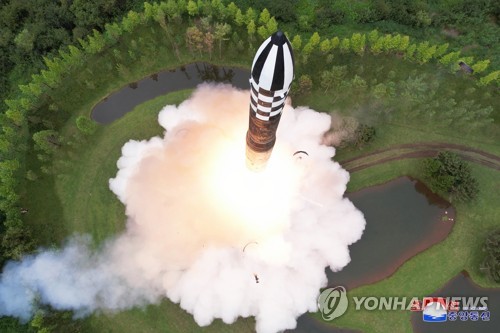 Experts see possibility of N.K. conducting nuclear test before U.S. presidential vote
Experts see possibility of N.K. conducting nuclear test before U.S. presidential vote -
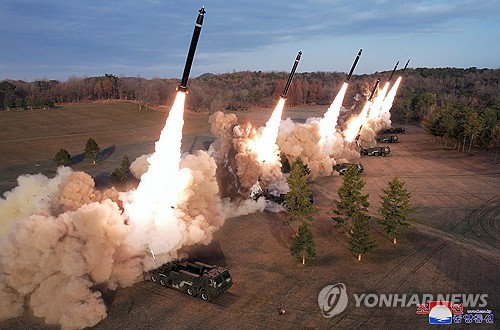 N. Korea says Kim guided simulated nuclear counterattack drills for 1st time
N. Korea says Kim guided simulated nuclear counterattack drills for 1st time -
 Looming weekly closure of major hospitals feared to worsen medical service crisis
Looming weekly closure of major hospitals feared to worsen medical service crisis
-
 N. Korea denounces U.S. condemnation of human rights violations
N. Korea denounces U.S. condemnation of human rights violations -
 BTS' RM to prerelease a track of 2nd solo album
BTS' RM to prerelease a track of 2nd solo album -
 Coach apologizes for missing out on Olympic football qualification, calls for system overhaul
Coach apologizes for missing out on Olympic football qualification, calls for system overhaul -
 (LEAD) Blinken calls on China to press N. Korea to end its 'dangerous' behavior
(LEAD) Blinken calls on China to press N. Korea to end its 'dangerous' behavior -
 S. Korea, U.S. lay out respective visions for new defense cost-sharing deal: U.S. negotiator
S. Korea, U.S. lay out respective visions for new defense cost-sharing deal: U.S. negotiator

















